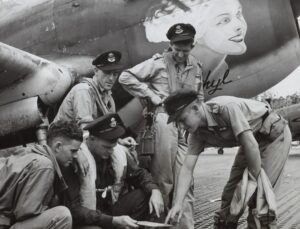Tiefling horns have a rich and fascinating history that can be traced back to various mythologies and folklore from around the world. In many cultures, horns have been associated with supernatural beings, demons, and otherworldly creatures. In Greek mythology, for example, the god Pan is often depicted with goat-like horns, symbolizing his connection to nature and the wild. Similarly, in Norse mythology, the god Loki is often depicted with horns, representing his mischievous and unpredictable nature. These ancient myths and legends have helped shape the modern perception of tiefling horns as a symbol of otherness and the supernatural.
In folklore, horns have often been associated with the devil and demonic entities. In European folklore, the devil is often depicted with horns, a symbol of his malevolent nature and connection to the underworld. This association has carried over into modern depictions of tieflings in fantasy literature and role-playing games, where they are often portrayed as descendants of demons or other infernal beings. The origins of tiefling horns are deeply rooted in these ancient myths and folklore, which have helped shape the cultural significance and symbolism of these iconic features.
Key Takeaways
- Tiefling horns have origins in various mythologies and folklore, often associated with demons, devils, and other supernatural beings.
- The depiction of Tiefling horns has evolved over time in art and literature, from fearsome and monstrous to more diverse and individualized representations.
- Tiefling horns hold cultural significance, symbolizing otherness, rebellion, and the struggle between good and evil in various societies and belief systems.
- Tiefling horns play a significant role in role-playing games like Dungeons and Dragons, often influencing character abilities and storylines.
- Real-life inspirations for Tiefling horns can be found in historical and cultural references, such as depictions of horned figures in ancient art and mythology.
The Evolution of Tiefling Horns in Art and Literature
Tiefling horns have undergone a significant evolution in art and literature over the centuries. In medieval art, demons and other infernal beings were often depicted with horns, reflecting the prevailing religious beliefs of the time. These early depictions laid the groundwork for the modern portrayal of tieflings in fantasy literature and role-playing games. As the genre of fantasy literature began to take shape in the 20th century, tieflings became a popular trope, often depicted as outcasts or misunderstood individuals with demonic ancestry.
In literature, tiefling horns have been used as a symbol of otherness and the struggle for acceptance. Characters with tiefling heritage often grapple with their demonic lineage and the prejudices of society, making them compelling and complex figures in fantasy narratives. In art, tiefling horns have been depicted in a variety of shapes and sizes, reflecting the diverse cultural influences that have shaped their portrayal. From elegant, curved horns to twisted, jagged ones, tiefling horns have become a defining feature of these iconic fantasy creatures.
The Symbolism and Cultural Significance of Tiefling Horns
Tiefling horns hold deep symbolism and cultural significance in fantasy literature and role-playing games. As descendants of demons or infernal beings, tieflings are often portrayed as outsiders, struggling to find their place in a world that fears and rejects them. Their horns serve as a visual representation of their demonic heritage, marking them as different from the rest of society. This symbolism has been used to explore themes of identity, prejudice, and the search for belonging in countless fantasy narratives.
In addition to their symbolic significance, tiefling horns also carry cultural meaning within the context of role-playing games. Players who choose to play as tieflings often embrace their characters’ demonic lineage, using their horns as a means of expressing their unique identity within the game world. The cultural significance of tiefling horns has helped shape the way these creatures are portrayed in popular media, influencing everything from character design to narrative themes.
The Role of Tiefling Horns in Dungeons and Dragons and Other Role-Playing Games
| Role-Playing Game | Tiefling Horns | Effect |
|---|---|---|
| Dungeons and Dragons | Physical appearance | Can affect social interactions and perception by NPCs |
| Pathfinder | Physical feature | May provide bonuses or penalties in certain situations |
| World of Darkness | Symbol of heritage | Can influence character background and relationships |
Tiefling horns play a central role in Dungeons and Dragons and other role-playing games, where they are a defining feature of the tiefling race. In Dungeons and Dragons, tieflings are depicted as individuals with infernal heritage, often possessing demonic traits such as horns, tails, and pointed teeth. Players who choose to play as tieflings can customize their characters’ horns, tail, and other demonic features, allowing for a high degree of personalization.
The inclusion of tieflings in role-playing games has added depth and diversity to the fantasy genre, allowing players to explore themes of identity and otherness through their characters. Tiefling horns have become an iconic feature of these games, serving as a visual cue for players to express their characters’ demonic lineage. The role of tiefling horns in role-playing games has helped shape the way these creatures are perceived in popular culture, cementing their status as beloved and enduring figures in the fantasy genre.
The Real-Life Inspirations for Tiefling Horns in History and Culture
The real-life inspirations for tiefling horns can be found in various historical and cultural sources from around the world. In many ancient cultures, horns were associated with power, fertility, and the supernatural. For example, in ancient Mesopotamia, horned headdresses were worn by priests and rulers as a symbol of divine authority. Similarly, in African folklore, horned creatures such as the African unicorn were believed to possess magical powers and were revered as symbols of strength and protection.
The influence of these real-life inspirations can be seen in the portrayal of tiefling horns in fantasy literature and role-playing games. The association of horns with power and otherworldly abilities has helped shape the way tieflings are depicted in popular media, adding depth and complexity to their characterizations. By drawing on these real-life inspirations, creators have been able to infuse tiefling horns with cultural significance and historical resonance, enriching their portrayal in fantasy narratives.
The Diversity of Tiefling Horns: Different Shapes and Sizes

Tiefling horns come in a wide variety of shapes and sizes, reflecting the diverse cultural influences that have shaped their portrayal in fantasy literature and role-playing games. From elegant, curved horns reminiscent of ancient depictions of demons to twisted, jagged ones that evoke a sense of danger and unpredictability, tiefling horns can be customized to suit a wide range of character concepts. This diversity allows players to express their characters’ unique identities through their choice of horn design.
In addition to their aesthetic diversity, tiefling horns also vary in terms of their symbolic meaning. For example, characters with long, sweeping horns may be perceived as regal or powerful, while those with shorter, more aggressive-looking horns may be seen as fierce or intimidating. The diversity of tiefling horns adds depth and complexity to these iconic fantasy creatures, allowing for a rich tapestry of characterizations that reflect the myriad cultural influences that have shaped their portrayal.
The Modern Interpretation of Tiefling Horns in Pop Culture and Media
In modern pop culture and media, tiefling horns have become an iconic symbol of the fantasy genre, appearing in a wide range of media including books, video games, television shows, and movies. The portrayal of tieflings in popular media has helped cement their status as beloved and enduring figures in the fantasy genre, capturing the imagination of audiences around the world. From the elegant horn designs seen in high-fantasy epics to the more sinister and menacing interpretations found in darker fantasy narratives, tiefling horns continue to captivate audiences with their rich symbolism and cultural resonance.
The modern interpretation of tiefling horns in pop culture reflects a growing appreciation for diverse and complex characterizations within the fantasy genre. Characters with tiefling heritage are often portrayed as multifaceted individuals with rich inner lives and compelling narratives. Their horns serve as a visual cue for audiences to recognize them as outsiders or individuals with supernatural abilities, adding depth and complexity to their characterizations. The modern interpretation of tiefling horns in pop culture has helped elevate these iconic features to new heights, ensuring their enduring popularity for years to come.
Sure, here’s a paragraph for you:
“Are tiefling horns just a fantasy trope, or could they have a basis in reality? According to a recent article on Ultimate Sahara, researchers have discovered ancient cave paintings depicting humanoid figures with horn-like protrusions on their heads. Could these ancient depictions be evidence of tiefling-like beings that once roamed the earth? The article delves into the fascinating intersection of mythology and anthropology, shedding light on the origins of tiefling lore and its potential real-world connections.”
FAQs
What are tiefling horns?
Tiefling horns are a physical trait commonly associated with tieflings, a fictional race in various fantasy role-playing games and literature. They are typically depicted as curved, pointed horns that protrude from the tiefling’s forehead or temples.
Are tiefling horns a common feature among all tieflings?
In most fantasy settings, tieflings are depicted as having horns, but it ultimately depends on the specific lore and world-building of the game or story. Some variations of tieflings may not have horns, or their horns may be less prominent.
What is the significance of tiefling horns in their lore?
Tiefling horns are often symbolic of their infernal heritage, as tieflings are often portrayed as descendants of fiends or demons. The horns serve as a visual representation of their otherworldly lineage and are often stigmatized in the societies they inhabit.
Can tiefling horns vary in appearance?
Yes, tiefling horns can vary in size, shape, and color depending on the individual and the specific lore of the fantasy world. Some tieflings may have larger, more imposing horns, while others may have smaller, subtler horns.
Do tiefling horns have any magical properties?
In most fantasy settings, tiefling horns are purely a physical trait and do not possess inherent magical properties. However, they may be incorporated into a tiefling character’s backstory or abilities in role-playing games or literature.


